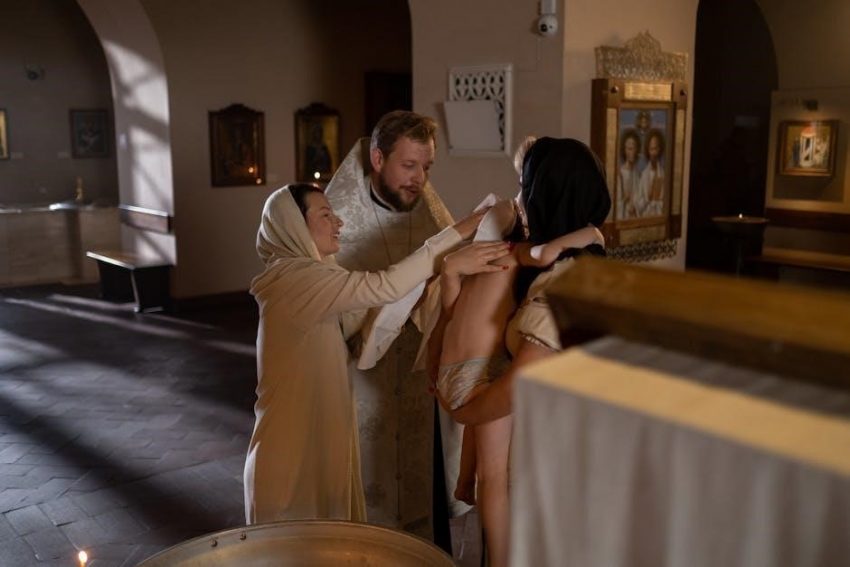The High Priest’s garments symbolize divine holiness, purity, and spiritual truths, serving as a visual representation of God’s grandeur and the priest’s role in atonement and sacred service.
Overview of the High Priest’s Role and Attire
The High Priest served as a spiritual leader and intermediary between God and humanity, wearing sacred garments that symbolized holiness, purity, and divine authority. His attire, meticulously designed, was central to ritual practices, representing God’s grandeur and the priest’s sacred role. The garments were both dignified and beautiful, reflecting the profound spiritual truths they embodied.
Importance of Symbolism in Religious Garments
Religious garments convey deep spiritual truths and divine values, with the High Priest’s attire exemplifying this through its intricate design and materials. The use of specific colors and fabrics symbolizes purity, holiness, and a connection to the divine. These symbols guide followers in understanding their faith’s core principles, emphasizing humility, service, and the sacred nature of religious rituals and practices.
Historical Context of the High Priest’s Clothing
The High Priest’s garments were divinely ordained by God, as detailed in Exodus, to reflect both divine and human aspects of sacrificial worship. These sacred clothes, crafted with precise instructions, symbolized the priest’s role as a mediator between God and humanity, embodying purity, holiness, and the people’s identity before God, as well as the divine presence in their midst historically.
The Tunic
The tunic, made of fine woven linen, symbolizes purity and righteousness, covering the priest’s body to signify moral integrity and readiness for divine service, reflecting Christ’s perfect righteousness.
Design and Material of the Tunic
The tunic was crafted from fine woven linen, symbolizing purity and righteousness; Its design covered most of the priest’s body, emphasizing modesty and humility. The material’s simplicity and elegance reflected divine standards, while its woven structure signified unity and wholeness in service to God.
Symbolism of the Tunic in Biblical Context
The tunic symbolized Christ’s perfect righteousness, covering humanity’s imperfections. It represented the believer’s spiritual clothing in righteousness, signifying acceptance before God. The tunic’s design and material emphasized purity, serving as a visual reminder of God’s holy standards and the priest’s role in atonement and sacred service.
The Pants
The pants, made of fine linen, symbolize modesty and purity, atoning for sexual transgressions, ensuring the priest’s moral integrity while performing sacred rituals before God.
Purpose and Design of the Priestly Pants
The priestly pants, made of fine linen, symbolize purity and modesty. Designed to cover, they atone for sexual transgressions, ensuring moral integrity during rituals. Worn under the tunic, they emphasize humility and adherence to divine standards, reflecting the priest’s consecrated role in worship and service.
Symbolic Meaning of the Pants in Rituals
The priestly pants symbolize purity, modesty, and moral integrity. Worn during rituals, they signify the priest’s humility and consecrated role, ensuring moral uprightness. By atoning for transgressions, they emphasize righteousness, reflecting the priest’s divine calling to serve as a holy mediator between God and the people.
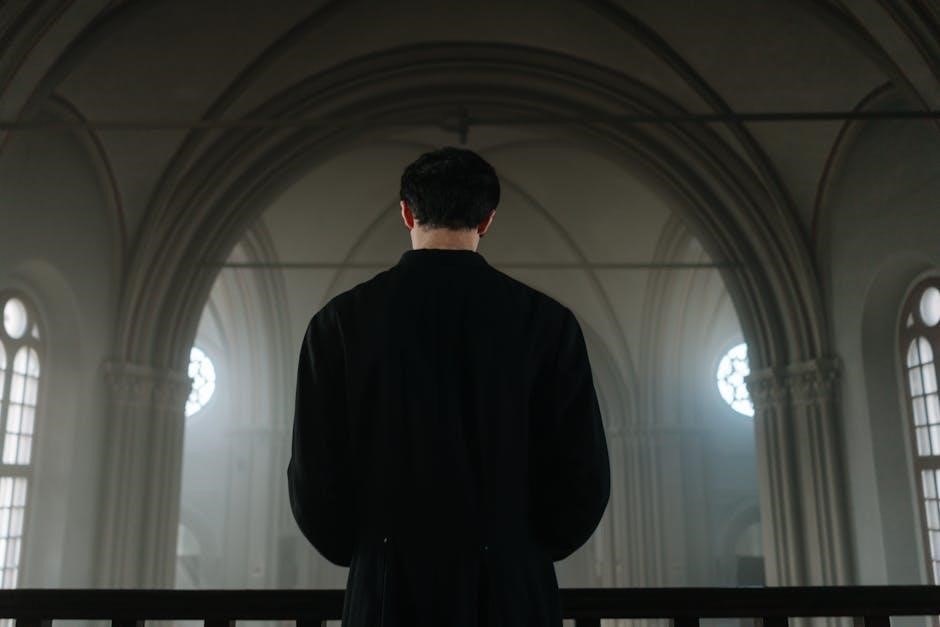
The Turban
The turban, a symbol of spiritual authority, was intricately designed to signify the priest’s divine connection and humility, representing humanity’s highest spiritual aspirations and sacred service to God.
Structure and Significance of the Turban
The turban, made of fine linen, symbolized purity and divine authority. It featured a gold plate inscribed with “Holiness to the Lord,” signifying the priest’s sacred role as a mediator between God and humanity, embodying spiritual elevation and humility in service.
Symbolic Representation of Spiritual Authority
The turban’s gold plate, inscribed with “Holiness to the Lord,” symbolized the High Priest’s divine authority and role as a spiritual mediator. It represented humanity’s highest spiritual attainment, embodying humility and sacred responsibility, while reflecting God’s presence and the priest’s connection to the divine will in serving the people.
The Breastplate
The breastplate, adorned with twelve precious gems, symbolized divine guidance and authority, serving as a sacred tool for decision-making and reflecting God’s will and spiritual leadership.
Construction and Gems of the Breastplate
The breastplate was crafted from gold, blue, purple, and scarlet yarn, and fine linen, featuring twelve precious gems, each engraved with a tribe of Israel, symbolizing the priest’s role in bearing the people before God in prayer and intercession, embodying divine presence and authority.
Symbolism of the Breastplate in Decision-Making
The breastplate, worn over the heart, symbolized divine guidance in decision-making, as it held the Urim and Thummim, tools for seeking God’s will, representing the High Priest’s role in discerning divine judgment and leading Israel with wisdom and spiritual clarity.

The Ephod
The Ephod, a key element of the High Priest’s attire, was intricately woven with gold, blue, purple, and scarlet threads, symbolizing divine connection and priestly responsibilities.
Design and Function of the Ephod
The Ephod was crafted from gold, blue, purple, and scarlet threads, symbolizing divine connection. It featured two onyx stones engraved with Israel’s tribes, signifying the priest’s intercessory role. Worn over the breastplate, it facilitated divine guidance in decision-making, embodying the priest’s responsibility to seek God’s will for the people, blending beauty with sacred purpose.
Symbolism of the Ephod in Priestly Responsibilities
The Ephod symbolized the priest’s role as an intercessor, bearing Israel’s tribes on his shoulders, signifying their presence before God. It represented divine guidance, as the High Priest used it to seek God’s will, embodying the connection between heaven and earth in leadership and spiritual responsibility, ensuring harmony and divine order in Israelite worship and governance.
The Belt
The belt, made from fine linen, symbolizes unity and readiness for divine service, binding the tunic and representing strength in commitment to God’s work and purity.
Design and Material of the Belt
The belt was crafted from fine linen, symbolizing purity and righteousness. It was intricately woven, often with embroidered patterns, and tied securely around the priest’s waist to fasten the tunic, ensuring modesty and practicality in service. The fine linen represented moral uprightness, aligning with the priest’s role in sacred duties.
Symbolism of the Belt in Unity and Service
The belt symbolized unity and readiness for divine service, binding the priest’s garments securely. Its design emphasized strength and commitment, reflecting the priest’s role in uniting the people with God. The fine linen used in its crafting represented purity, underscoring the priest’s dedication to sacred duties and the collective mission of spiritual leadership.
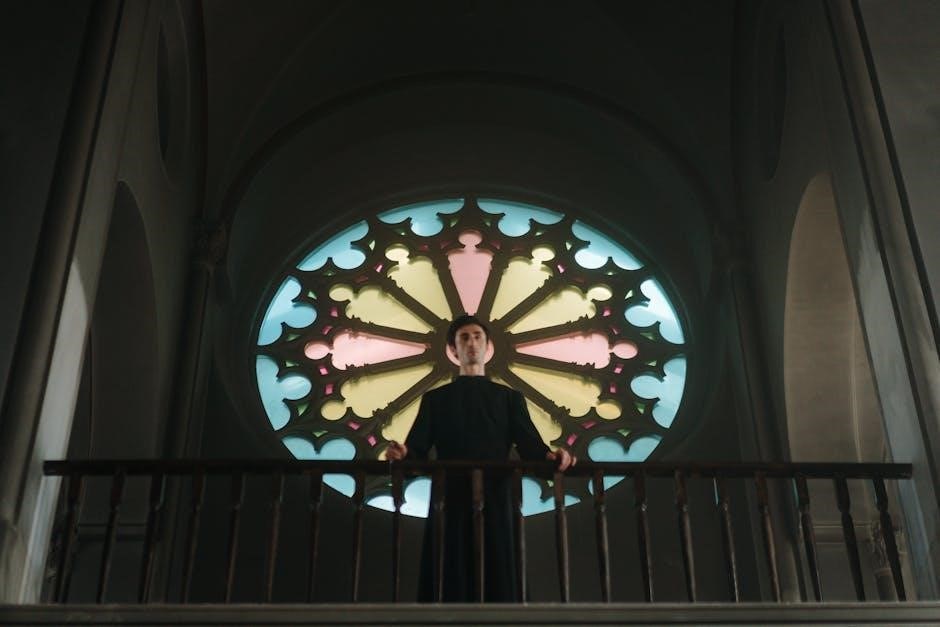
The Robe
Symbolism of the Robe in Rituals
The robe’s pomegranates and bells symbolized abundant righteousness and divine acknowledgment, ensuring the priest’s rituals were conducted with holy precision and spiritual significance before God.
Features and Design of the Robe
The robe was crafted from fine blue wool, adorned with golden bells and pomegranates along its hem, symbolizing divine abundance and righteousness. Its intricate design reflected sacred beauty, with meticulous embroidery and precise craftsmanship, ensuring a garment worthy of the High Priest’s noble role in rituals and divine service.
Symbolic Meaning of the Robe in Rituals
The robe’s bells and pomegranates symbolized divine abundance and righteousness, announcing the High Priest’s presence before God. Their presence ensured rituals were conducted with humility and purity, reinforcing the priest’s mediatorial role and connection to sacred truths, embodying God’s divine order and the people’s spiritual renewal.
The Undergarments
The undergarments, made of fine linen, symbolized purity and righteousness, worn next to the skin to emphasize modesty and humility in sacred service before God.
Design and Purpose of Undergarments
The undergarments, made of fine linen, were designed to cover the priest’s body modestly, emphasizing purity and humility. They symbolized righteousness and were worn next to the skin to ensure cleanliness and dignity in sacred service, reflecting the importance of inner purity in ministering before God.
Symbolic Significance of Undergarments in Purity
The undergarments, made of fine linen, symbolized purity and righteousness. Worn next to the skin, they represented inner cleanliness and modesty, emphasizing the priest’s moral integrity. This attire reflected the requirement for spiritual purity and humility, essential for those serving in the sacred Temple duties, embodying the divine standard of holiness and moral uprightness.
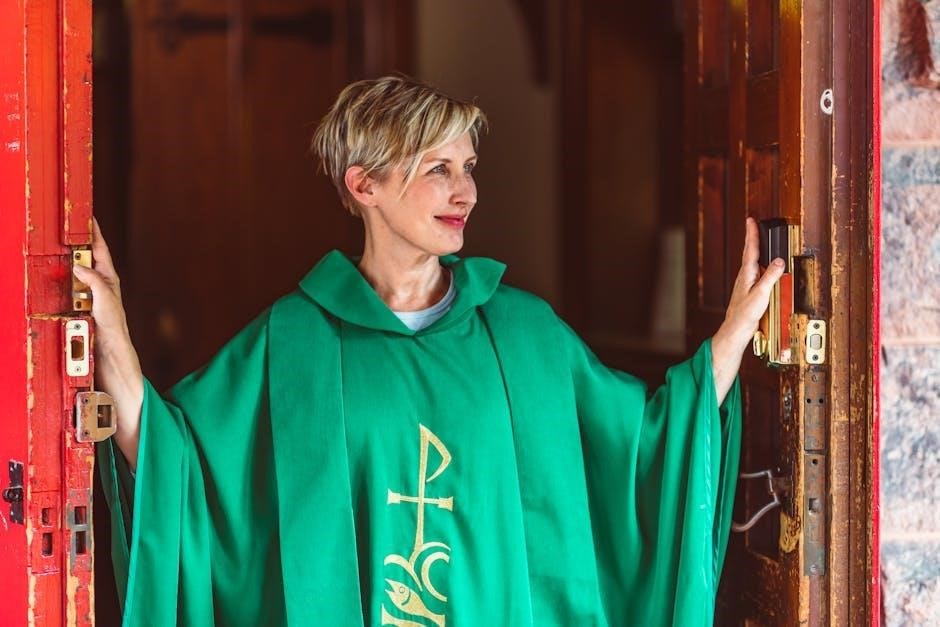
Materials and Colors
The garments were crafted from fine linen, wool, and precious dyes, with colors like blue, purple, and scarlet symbolizing divine royalty, purity, and sacred service to God.
Significance of Materials Used
The materials—fine linen, wool, blue, purple, scarlet, and gold—symbolized purity, divine royalty, and redemption. Linen represented righteousness, while wool in blue mirrored heaven’s majesty. Scarlet signified life and atonement, and gold embodied divine presence, reflecting the priest’s sacred role and humanity’s unity with God through intricate, symbolic craftsmanship.
Symbolism of Colors in the Garments
Blue symbolized heaven and divine royalty, while purple represented nobility and richness. Scarlet signified life and atonement, and white stood for purity. These colors collectively reflected the priest’s sacred role, embodying God’s presence and humanity’s connection to the divine, ensuring the garments visibly expressed profound spiritual truths and divine order.
Spiritual Significance
The High Priest’s garments embody divine holiness and purity, reflecting the spiritual connection between the priest and God, and the sacred order of atonement and divine service.
Representation of Holiness and Purity
The High Priest’s garments symbolize holiness and purity, reflecting divine order and the priest’s sacred role. The tunic, made of fine linen, represents righteousness, while the turban signifies spiritual authority. The breastplate, adorned with gems, symbolizes divine decisions, and the ephod denotes priestly responsibilities, embodying the purity and holiness required for sacred service.
Connection to Divine Order and Atonement
The High Priest’s garments embody divine order, reflecting God’s sacred structure. The breastplate and ephod facilitate decisions and rituals, symbolizing atonement. These elements connect the priest to divine authority, enabling him to mediate between God and humanity, ensuring harmony and forgiveness through sacred attire and rituals.
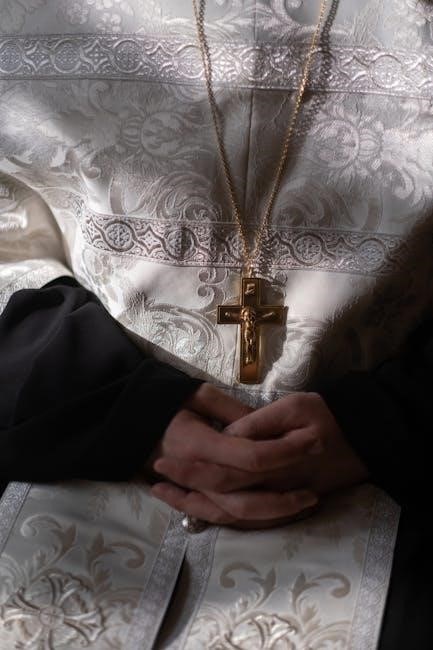
Historical and Cultural Context
The High Priest’s garments reflect ancient Jewish heritage, with intricate designs and rituals rooted in divine instructions. Their manufacturing and use were deeply intertwined with cultural identity and worship practices.
Manufacturing Process and Ritual Use
The High Priest’s garments were meticulously crafted from materials like wool, blue, purple, and scarlet, following divine instructions. Their intricate design and ritual use emphasized purity and sacred service, with each piece symbolizing a connection to divine order and atonement, reflecting ancient Jewish traditions and cultural reverence for spiritual practices.
Cultural Impact and Preservation of Symbolism
The High Priest’s garments hold profound cultural significance, symbolizing purity, righteousness, and divine connection. Their intricate design and materials, such as wool and precious dyes, are preserved in historical texts and exhibitions, educating future generations about ancient traditions. Today, these garments continue to inspire religious and cultural practices, bridging the past with modern spiritual understanding.
Comparative Analysis
The High Priest’s garments uniquely symbolize divine connection, contrasting with yet paralleling other religious attire in their use of symbolic colors and intricate designs for spiritual representation.
Similarities with Other Religious Attires
Like the High Priest’s garments, many religious attires use symbolic colors and materials to signify spiritual purity and divine connection. For instance, the use of purple and gold in Christian clergy robes mirrors the High Priest’s regalia, while Buddhist monks’ simple robes echo the humility reflected in the priest’s undergarments. Both traditions emphasize purity and sacred purpose through their attire.
Unique Aspects of High Priest Garments
The High Priest’s garments are uniquely adorned with gold thread, symbolizing divine light, and specific gemstones on the breastplate for spiritual discernment. The ephod and turban, with their intricate designs, are exclusive to the High Priest, emphasizing his singular role as a mediator between God and humanity, unlike other religious attire.
Modern Relevance
The symbolism of the High Priest’s garments continues to inspire modern spirituality, emphasizing purity, unity, and readiness for divine service, reflecting timeless truths in contemporary practices.
Symbolism in Contemporary Religious Practices
The High Priest’s garments inspire modern faith communities, symbolizing purity, unity, and divine connection. Their intricate designs remind believers of sacred responsibilities, fostering humility and reverence in worship. Contemporary practices often draw parallels between the tunic’s righteousness and modern modesty, while the turban’s symbolism reinforces the pursuit of spiritual excellence and closeness to the divine.
Application of Symbolism in Everyday Life
The High Priest’s garments offer timeless lessons for modern life, emphasizing purity, humility, and righteousness. Their symbolism encourages individuals to embody holiness in daily actions, fostering integrity and moral strength. The garments remind us to seek divine guidance in decisions and to serve others with compassion, reflecting their spiritual significance in practical ways.
The High Priest’s garments embody profound symbolism, reflecting divine order and holiness. Their intricate design and materials highlight the priest’s sacred role in atonement and service. These garments inspire modern spiritual growth, reminding us of the importance of purity, integrity, and devotion in our lives, offering timeless lessons for humanity.

